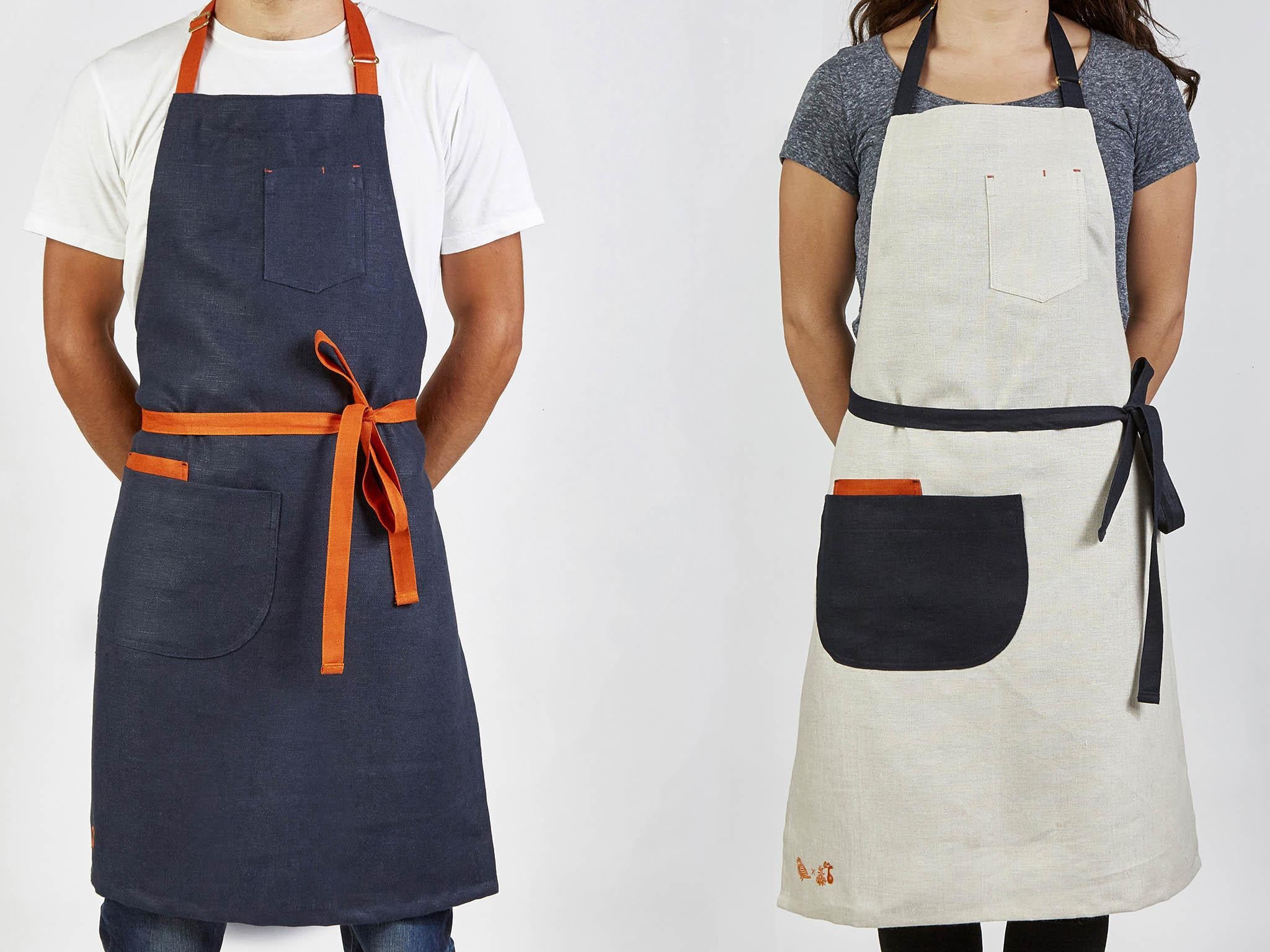Counter culture: How aprons have become a kitchen-must have again
What were once a symbol of housewives have been given a modern twist to once again make aprons an essential kitchen item

The leather is smooth, buttery and supremely strokeable. The styling is pared down, classic, making it a timeless wardrobe essential. Are we talking a five-figure handbag? Or perhaps this season’s must-have leather jacket straight from the Paris catwalk? Actually, no. It just so happens we’re talking about an apron. Yes, an apron.
It’s from the Dutch company Witloft: designers of high quality leather aprons, as well as leather accessories like knife rolls and holders. But it’s the leather apron that impressed me the most.
Founder Frank Abbenhuis came up with the idea while he was hanging out in his garden shed. He was making furniture and needed an apron but couldn’t find anything he liked that ticked all the boxes. So he fashioned his own out of a rough piece of leather and the idea grew from there. That was back in 2014 and today, Witloft have sold over 150,000 leather aprons worldwide.
Aprons aren’t anything new; we’ve been wearing them for centuries as a smart way to protect our clothing. The colour and style of an apron often denoted a profession (think the blue and white stripe of a butcher’s apron) as well as your position within that profession. Domestically, aprons fell out of fashion in the 1960s when women shrugged off the stay-at-home message that aprons denoted.
But now they're undergoing a renaissance thanks in part to a happy return to the kitchen, as well as a growth in craft. It’s also tapping into something that happens when you don a really good apron. Abbenhuis puts it simply: “The moment I put on an apron, it feels like I can conquer the world.”
That’s a sentiment that Northern Ireland-based apron designers Enrich & Endure understand. “We sometimes joke that an apron is your creative uniform. It’s not just about keeping your clothes clean or looking good in the kitchen or studio,” says Sarah Quinn, who founded the company with her brother Lorcan. “When I put an apron on I suddenly become more focused, in the zone and automatically in the mood to create something special.”

The Quinns stared out making homeware items like blankets, throws and cushions, but as keen cooks the draw to the kitchen was a natural. “The focus an apron brings is amazing. Cooking with or without one on can be two totally different experiences,” she adds.
Food writer Ed Smith agrees. He’s collaborated with the Quinns to come up with his own range of aprons, including a highly covetable one in blue and orange, which he sells on his Rocket & Squash website. As the author of the new cookbook On the Side, Smith spends his fair share of time in the kitchen cooking.
“I’m totally on board with Lorcan and Sarah’s view that, when you put an apron on, it’s a bit like a statement that you’re about to make something: a craftperson’s uniform. They’re not too showy, wash well, and I definitely feel like I’m on a cooking mission when I put mine on.”
Aprons are simplicity themselves. Typically, you can choose from a half apron that is a rectangular piece of fabric that ties around the waist and will hit mid thigh or in some cases lower. A full or bib apron covers the chest, ties around the waist and slips over your head with a loop. But despite this simplicity, it’s amazing how wrong some apron designers can get it. Because as well as looking good, an apron has to feel right.
Sarah Quinn says their success is down in large part to the linen they use, which both looks good and is hard wearing. “But at the beginning we had a lot of details to get right, like the perfect length and width, shape of pockets and weight of linen.”
While linen or cotton is the material that comes to mind for cooking aprons, the folks at Witloft assure me that leather can be as at home in the kitchen as it is at a blacksmiths forge. Over time, the leather wears and becomes softer, and if spills do happen, they have a leather cleaning kit with cleaner and wax to keep it healthy and happy.
And happy is what an apron should be about. As Abbenhuis says, remembering his first foray into apron design, “As soon as I put on the apron, I got into this work mode. I felt motivation and passion, and thought: this apron can be so much better, more beautiful and more functional.”

Join our commenting forum
Join thought-provoking conversations, follow other Independent readers and see their replies
Comments